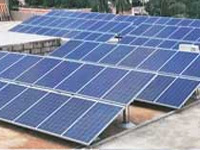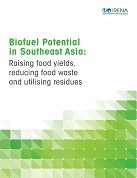Punjab Green Hydrogen Policy
<p>The Punjab Energy Development Agency has released a draft green hydrogen policy aiming to achieve a green hydrogen and ammonia production capacity of 100 kilo tonnes per annum by 2030. The policy proposes
<p>The Punjab Energy Development Agency has released a draft green hydrogen policy aiming to achieve a green hydrogen and ammonia production capacity of 100 kilo tonnes per annum by 2030. The policy proposes
<p>Peat fires in boreal and tundra regions can potentially cause a high CO2 release, because of their large soil carbon stocks. Under current and future climate warming the frequency and intensity of droughts
<p>Black carbon (BC) and organic carbon (OC) aerosols are important components of fine particulate matter (PM2.5) in polluted urban environments. Quantifying the contribution of fossil fuel and biomass
<p>The world’s forests play a pivotal role in the mitigation of global climate change. By photosynthesis they remove CO2 from the atmosphere and store carbon in their biomass. While old trees are
<p>Historical changes in soil carbon associated with land-use change (LUC) result mainly from the changes in the quantity of litter inputs to the soil and the turnover of carbon in soils. We use a factor
This report provide a summary of international best practice experience in the cement sector and focus on specific technical measures that could be implemented by cement plants to reduce their operating
The use of biomass for heat and power production is supported in many IEA countries since biomass as a renewable fuel can effectively substitute fossil fuels and consequently reduce fossil CO2. During
Uses of main primary energy resources, such as coal, oil, and solid biomass, are directly linked with adverse impacts on human health. Air pollution emitted from various activities in the energy supply

International Renewable Energy Agency chief Adnan Z Amin on where the clean market is headed As the Director-General of the Abu Dhabi-headquartered International Renewable Energy Agency (IRENA) since
The World Bioenergy Association (WBA) has launched its WBA Global Bioenergy Statistics report for 2017. The report claims that across the world, bioenergy remains the biggest source of renewable energy.

Southeast Asia has considerable resources to produce liquid biofuels sustainably, using biomass feedstocks that would not cause carbon-dioxide emissions or interfere with food supply. Fulfilling the region’s